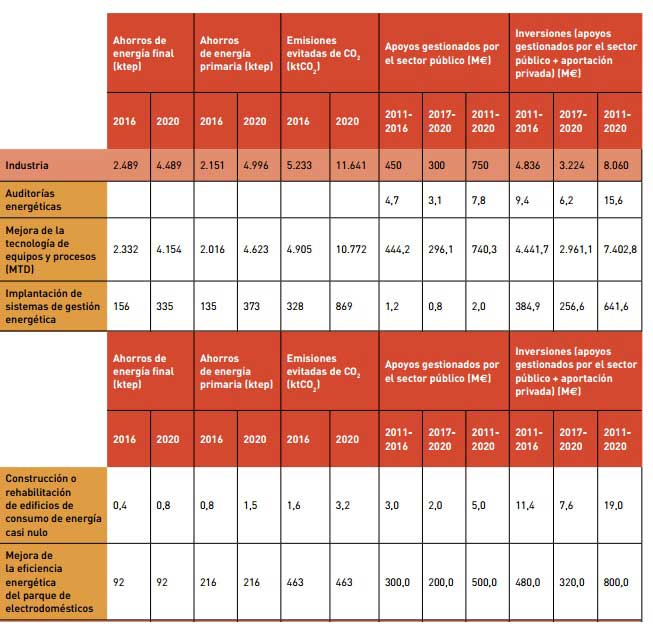-
Phone Number
-
Email Address
Around 2011, Spain launched the second route or Plan of National Action for Energy Efficiency 2011 – 2020 in which only the term of buildings with almost zero energy consumption, with a very promising future application of a series of measures and mechanisms of action.
Objectives, the improvement of the energy efficiency of the building envelope, thermal installations and lighting of the existing building park and the improvement of commercial refrigeration facilities; the construction and comprehensive rehabilitation of 8.2 million m2/year with high energy rating and construction of new buildings with the characteristics of almost zero energy consumption (See article on how to reduce energy consumption at home).
Although few remember what were the objectives to promote and deliver, a very ambitious plan of the that we can see the initial objectives in the following scheme (Only provided referring to building).

From 2011 to the present day, they have evidently passed many things, but the most curious - in our opinion - is that the practice in Spain has surpassed the Legislation, that is, we have allowed ourselves the luxury of construct, execute or rehabilitate buildings in which complies with European Regulations in buildings energy consumption almost nil NZEB before the Spanish administration, did not even, legislatively describe the concept of Building Energy Consumption almost Null as we can see continued.
The background in Spanish regulations to benefit the execution or rehabilitation of buildings energetically optimized focuses primarily on the requirements established in the Regulation of Thermal Installations of Buildings and the DB HE Basic Document on energy saving:

At the beginning of this year, the European Union launched a synthesis report on the national plans on of NZEB (2016 – It can be consulted here) of the countries EU members. In developmental assessment NZEB (Net Zero Energy Building = EECN Buildings with almost zero energy consumption or the rehabilitation of existing ones) of the member states. From the document, the results were not at all good for Spain, designated with "ES" .
Subsequently, Spain proceeded to the publication Royal Decree 56/2016 that defines the characteristics of the audits energy companies (Approved on February 14, 2016) where by the first time the definition was accommodated of
It is evident that with the simple contribution from the exposed definition we are not going to erase suddenly the red color of the previous table and the requirements from the EU before the EECN .
Contemplating the disparity between countries in the application of the existing regulatory framework, from the European Union they have just launch the document RECOMMENDATION (EU) 2016/1318 of the Commission (29 July of 2016 – HERE) on the guidelines to promote the buildings with almost zero energy consumption and the best practices to ensure that before the end 2020 all new buildings are consumer buildings almost zero energy.
This is a must-read document for everyone technical and especially, a warning forceful for the public administration Spanish and other lagging countries with paragraphs like…

The document establishes an important and shocking point with the current attitude of the administration… “The amount almost no or very low energy required should be covered, to a very large extent, by energy from renewable sources , including energy from renewable sources produced in situ or in the environment» with current administrative and legislative obstacles in the Spanish territory, the regulations literally "se face” the demands from the EU. (As data, for that we are aware of the importance of the sources renewables in the 12-page document is repeated 18 times the phrase “renewable sources”)
Apart from all the technical aspects that must be abide by, there are two dates that are reviewed again and that many of us already know. That guarantee the obligation that they must to comply with the EU countries…

We know that we are in a difficult moment in Spain in all aspects, but the reality is that since 2011 we have had time to do many things, legislatively speaking, and we have literally rested on our laurels.